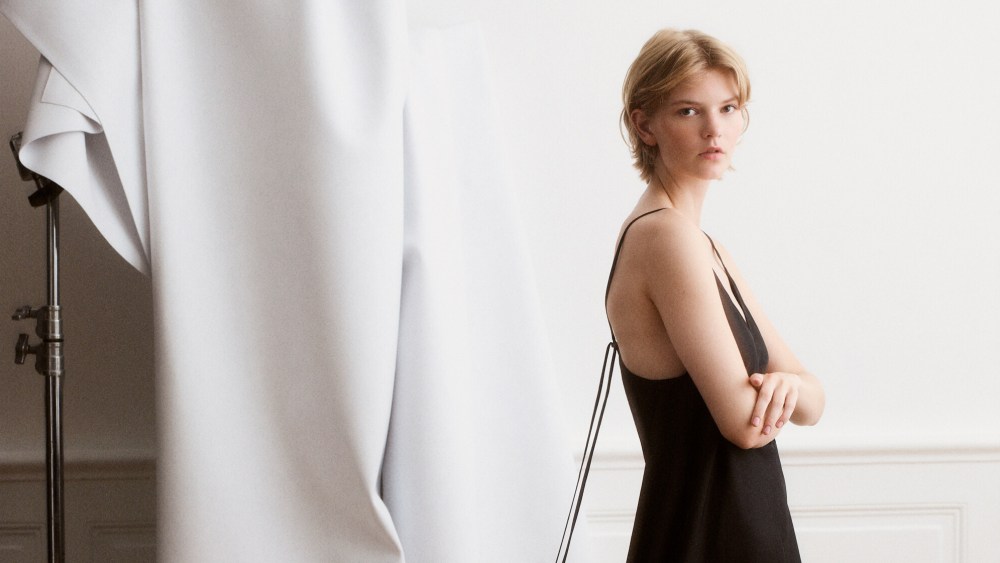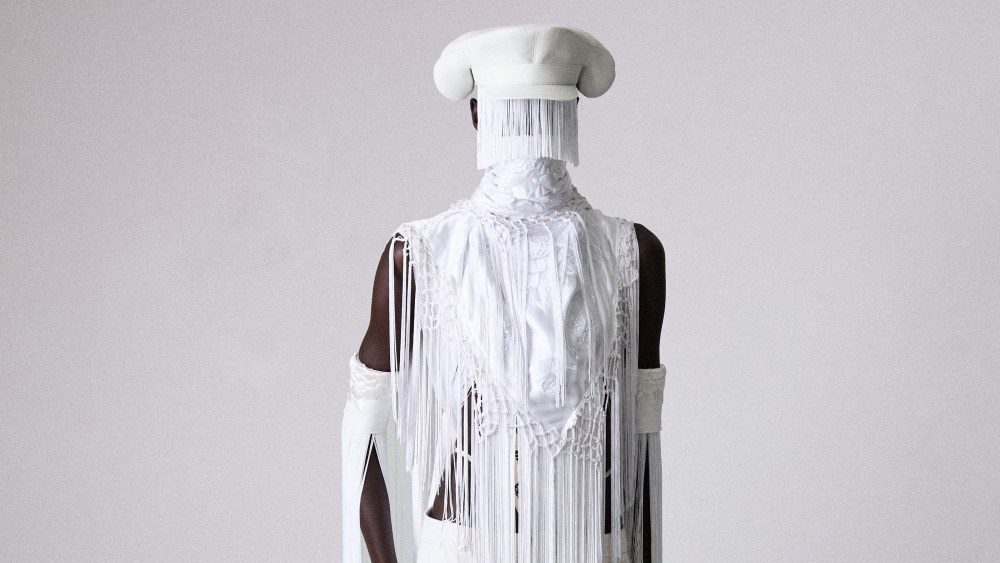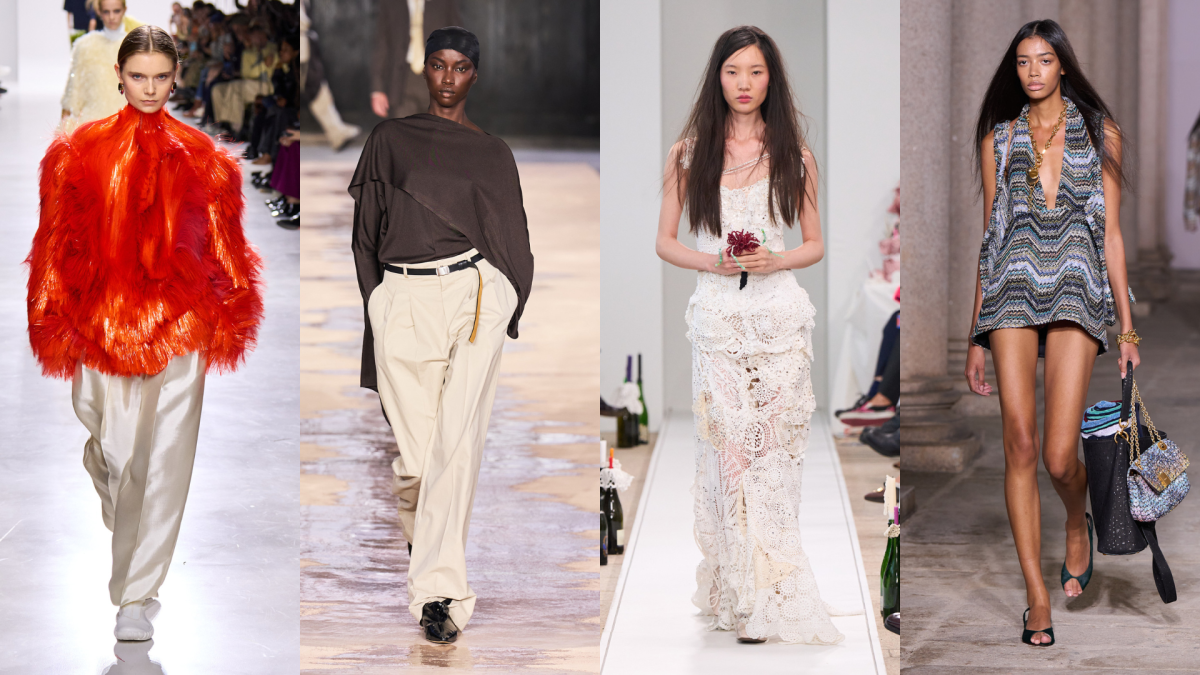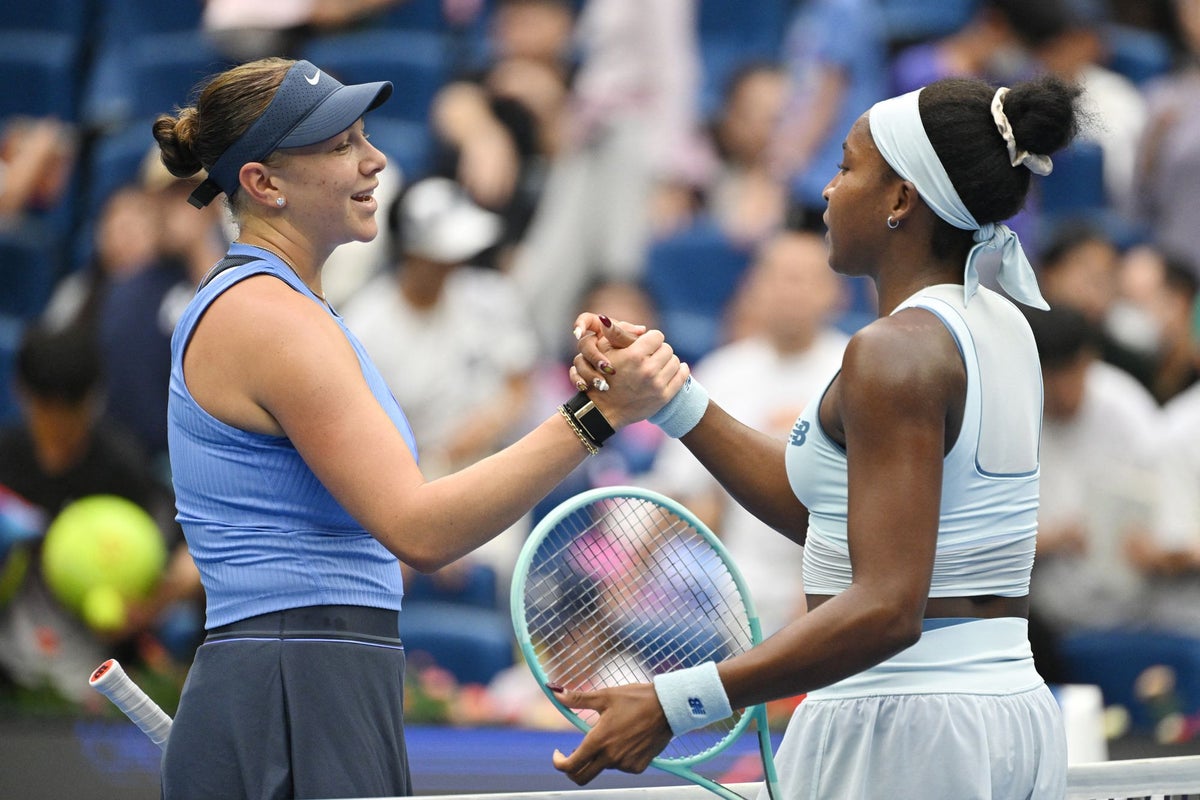
PARIS — After more than two decades of quietly building a cult following across music, fashion, and cafés, Maison Kitsuné is preparing for what founder and chief executive officer Gildas Loaëc calls a “reset.”
It follows the hiring of Abigail Smiley-Smith as creative director after three years without a formal design lead. When revealed in September, co-founders Loaëc and Masaya Kuroki described her arrival as “the next chapter” for the co-ed house.
With more than 20 years of experience at Calvin Klein, Victoria Beckham, Chloé and Stella McCartney, Smiley-Smith was brought in to re-establish a more refined, accessible luxury profile.
“We have a strong core fan base,” Loaëc told WWD, citing label loyalty driven by both product and price point. “We are also bringing in some modern functional elements, so that we give a bit of a more creative story.”
The brand, which began as a music label in 2002 before adding a ready-to-wear line in 2005, will retain Maison Kitsuné’s youth culture roots while targeting a more mature audience.

Crocheted pieces hand made in Marseille, France.
Courtesy of Maison Kitsuné
“We don’t want to lose that young client — that’s still part of the tribe, especially through the music — but we can equally now layer on top a client that is slightly more mature or elevated,” said Smiley-Smith. “That doesn’t have to be an age thing; it can be an aesthetic choice.”
Known for its hybrid model — part fashion brand, part music label, part coffee chain — Maison Kitsuné currently sees 90 percent of its revenue come from fashion. It operates 33 wholly-owned boutiques, 43 franchises, and the fashion label is stocked in more than 350 retailers worldwide.
On the hospitality side, Maison Kitsuné now has 35 cafés, a huge jump from just five around the world just six years ago. But it’s smaller beans, accounting for just 10 percent of the company’s revenue.
“Still, [the cafés] bring visibility,” Loaëc said. “Even if people don’t connect the café to the clothing right away, we try to ensure both are delivered with the same quality and creativity.”
Though many brands are now opening cafes in their stores, Maison Kitsuné was an early pioneer of café-retail hybrids, particularly in Japan, Loaëc noted.

Maison Kitsune Spring 2026
Courtesy of Maison Kitsune
Now it has taken that hybrid-vision further with its most ambitious lifestyle venture, the Desa Kitsuné in Bali. It’s a massive entertainment venue combining a nightclub, pool club, café, restaurant and retail store. Originally conceived as a hotel, that aspect has been postponed but remains an option for later expansion. It hosts DJ nights twice a week.
Loaëc sees this as a way to link music, fashion, and hospitality in physical spaces — “a good point just to also give some visibility and awareness to the brand,” especially with the flow of international tourists to Bali from local Asian countries.
Talks are also ongoing with potential partners to bring similar concepts to resort locations such as Dubai, Ibiza, Macao, and Thailand.
Asia remains the focal point of the brand’s expansion, with wholly owned operations in China and Japan, and local partners in South Korea, Indonesia, the Philippines, Taiwan, and Thailand.

Maision Kitsuné Spring 2026
Courtesy of Maison Kitsune
However, in the U.S., the brand recently closed its two stores. The timing was coincidental and not due to changing tariffs policies in the U.S., Loaëc said.
“I would like to blame tariffs, but it was more down to some mistakes we made in our own operations,” he said. The decision had been made before the tariffs were unveiled.
“The way we operated in the U.S. just didn’t work,” said Loaëc. Vancouver, Canada, remains the brand’s only North American location, while U.S. efforts will refocus on wholesale and rebuilding brand equity with Smiley-Smith’s new aesthetic.
But he emphasized the pause is just temporary, because long-term global growth would not be possible without physical locations in L.A. and New York, he believes, in part due to their oversized places in the global retail ecosystem and the U.S.’ continued dominance of pop culture.
“If you want to get stronger, even bigger brand awareness, we need to be coming back to America at some point,” he said. “That’s where everybody’s looking. There’s still a celebrity world everyone is so fascinated by.”
The decision to close the stores was in part due to its indie standing. The brand remains independent and has turned down “many” takeover offers. “Staying independent gives us creative freedom. Not every brand needs to become a billion-euro company,” said Loaëc.
That independence, however, comes with its own challenges. “We’re still cautious about the cash flow and, obviously, the economics of it since we are not attached to any big corporation,” he said, noting that marketing spend is one key area where they feel the pinch. “But it’s a more human way of doing things. We can pivot naturally, when it feels right.”
Expansion into accessories has already proven to be a boon for business. Since launching the Edie bag for Spring 2024, followed by the Casey, sales have exceeded expectations. “It gave us more confidence that we potentially have also something to say in that segment,” said Loaëc.
For the 2024 financial year, the company reported a turnover of 94 million euros and a profit across its activities.
The brand will continue its successful collaboration strategy, too, with partnerships such as Bonpoint for children’s clothing and Hunter boots for rain gear.

Maison Kitsuné Spring 2026
Courtesy of Maision Kitsuné
Maison Kitsuné also made its first moves into beauty, with its “Bien-Être” line of scented soaps, shampoos, and a perfume, in March. The company is currently looking for a partner to dive deeper into the category with cosmetics. Talks are underway, Loaëc said, and hinted that a lipstick may be coming soon.
Maison Kitsuné previously collaborated with L’Orèal Group’s Shu Uemura brand in 2019.
Still, he’s aware of the currently crowded beauty market. “Not everything is supposed to be a success, but we do want to have the chance to try to do new things at least,” he said.
Homeware is already lightly integrated through Café Kitsuné, which offers a small range of porcelain and ceramics. While not a core focus, it reinforces the brand’s lifestyle positioning and shows the full breadth of what the house is interested in, and capable of. But developing that segment is on the back burner for now.

Creative director Abigail Smith sporting pieces from the Spring 2026 collection.
Cécile Bortoletti / Courtesy of Maison Kitsuné
The Tokyo-based Loaëc and London-based Smiley-Smith are currently focused on elevating the Paris brand with the global urban perspective blending all the fashion capitals. “We’re both in two cities, and in Paris, so we bring lots of different perspectives and influences,” Smiley-Smith said.
As part of the reset, the duo have set their sights on a Paris Fashion Week debut, likely during the men’s shows in January. Talks with the Fédération de la Haute Couture et de la Mode for a berth on the official calendar are ongoing. “The dream would be to be doing a runway,” said Loaëc, though a more practical presentation format may come first.

Maision Kitsuné Spring 2026
Courtesy of Maison Kitsune
The Spring 2026 Collection
For Smiley-Smith’s first collection, titled “Voyage Vestiaire,” she drew inspiration from the perspective of a Japanese tourist discovering Paris. It also includes a capsule called “Savoir-Faire” which showcases the brand’s more upscale ambitions.
“It was about elevation,” she said. It’s a tightly-edited offering; this season is about 30 percent smaller than recent collections.
High-twist Japanese denim and sheer puff-printed fabrics carry the Franco-Japanese connection further. Even hunting jackets are reimagined in tonal Japanese denim. The fox logo remains — “but we don’t need it on everything and in all the colors,” said Smiley-Smith. “Let’s take away the noise.”
A standout includes chore jackets produced with cult Japanese label Kuro Denim, hand-painted with Eiffel Tower, Moulin Rouge and other Paris landmarks in classic blue-on-white. “I wanted to explore how Japan sees Paris,” she said.
Elsewhere, seersucker tailoring and technical parkas in nylon mesh nod to the brand’s sporty DNA.
The “Savoir-Faire” capsule focuses on craftsmanship, such as a reversible jacket sourced from France, a silk jersey dress with built-in neckline jewelry made by Parisian artisans, and hand-crocheted men’s shirts by a Marseille women’s collective.
The capsule includes just six pieces, each with a hangtag detailing its techniques and materials to better communicate the brand’s values to the customer. “Let’s get back to the codes of the brand, distill it to a purer place,” she added. “And then we can build from there.”

#Maison #Kitsuné #Resets #Brand #Creative #Vision #Paris #Fashion #Week #Goal






